Contrary to popular belief, the presence of bubbles in your transmission fluid isn’t normal. When air is introduced to the transmission fluid, bubbles are created.
While they may appear to be harmless, they have an impact on the fluid’s effectiveness. If there are a lot of them, it’s a sign that something is wrong with your transmission.
This article discusses the symptoms, causes, and solutions of bubbles in transmission fluid. With this guide, you’ll gain a deeper knowledge of the problem and how to solve it.
Symptoms of Bubbles In Transmission Fluid
The most noticeable symptom is the presence of many bubbles on the dipstick. You’ll also notice bubbles if you look closely after draining the fluid.
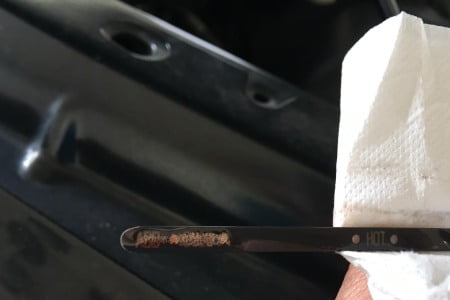
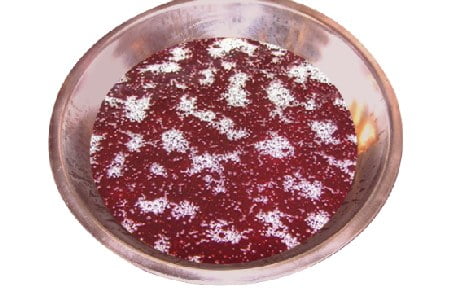
Bubbles In Transmission Fluid: Cause & Solution
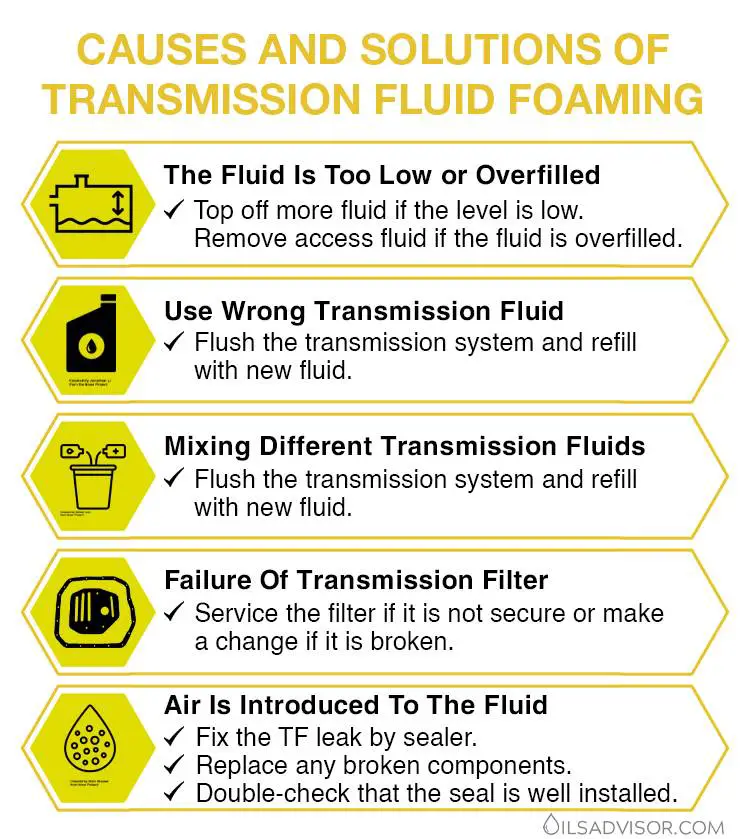
to avoid severe damage to the transmission system.
Related: Allison Transmission Fluid Type
Air Is Introduced To The Fluid
Causes
Through a broken seal or gasket, air can seep into the fluid inside the gearbox pan.
This can occur when transmission fluid leaks through the seal and gasket. The leak is the consequence of wear and tear on your transmission’s gaskets or seals. It’s also possible for air to get in if the seal isn’t firmly placed.
Solution
If you detect a minor leak in your transmission caused by a gasket or seal, apply a transmission sealer to your transmission fluid.
Alternatively, you should replace any broken components and double-check that the seal is well installed. If you’re not mechanically inclined, have your vehicle inspected by a competent mechanic. The new gasket or seal should meet or exceed the criteria specified by the original manufacturer.
The Fluid Level Is Too Low Or Too Full
Causes
These are the two most typical reasons for transmission fluid air bubbles.
When the transmission fluid level is low, the pump can suck in air with the fluid. So you see bubbles on the dipstick when the checking the transmission fluid.
Another common cause of air bubbles in the fluid is the overfilled level. The gears churn the fluid into bubbles when the gearbox is overfilled. This could trigger the system to overheat, causing significant harm.
Solution
Check the fluid level to see if it is overfilled. If that’s the case, you can fix this problem by simply draining out part of the fluid.
- When the fluid level is too full
When you check the fluid level is too much, simply drain the excess fluid. Some transmission pans include a drain plug, whereas others do not. You can drain the fluid by removing the drain plug if yours has one.
If your vehicle lacks a drain plug, you will have to remove the cooler lines. There are 2 cooler lines in the system, just remove the one that connects to the radiator to do the job. If you find it’s difficult to handle this, it’s advisable to take your car to your mechanic.
- When the fluid level is too low
Whereas if the transmission fluid level is low, add more fluid until it reaches the right level. To determine the proper fluid to use, always refer to your owner’s manual.
You can add more fluid by removing the dipstick, placing a funnel, and pouring the fluid into the system. Remember to observe the level to make sure it is full (but not too much).
If your car is not featured with a dipstick, use a special pump with a hose to refill new fluid via the drain plug into your transmission system. Consulting your mechanic is another way that you can do to make this maintenance easier.
Mixing Different Transmission Fluids
Causes
Check to see if you’ve mixed different transmission fluids. This could be what’s causing the bubbles. When different transmission fluids are mixed, foam on the dipstick can emerge.
Because different transmission fluids include different chemicals, mixing them can result in a solution that is completely at odds with the engine. It is not advisable to combine different types of transmission fluid.
Solution
The solution is to replace all of the mixed fluid in the transmission system. This is achieved by flushing your transmission system and refilling it with new transmission fluid. However, flushing your transmission is not an easy job, if you are not sure about this, I advise you to take your vehicle to the service shop instead.
Related: TH350, Th400 Transmission Fluid Capacity And Type
Using Wrong Transmission Fluid
Causes
The use of non-recommended fluids in your transmission can result in bubbles.
You could end up damaging your vehicle’s transmission system. Use only the transmission fluid recommended in your owner’s manual or a close substitute. If not, it can cause severe damage to your transmission.
Solution
The wrong transmission fluid has to be flushed from your transmission system. Before replacing transmission fluid, double-check the recommended fluid type. To get a professional result, have your transmission flushed by a professional mechanic.
Failure Of Transmission Filter
Causes
The transmission fluid becomes foamy because of the failure of the transmission filter. It could be due to a faulty filter or a filter that hasn’t been properly installed. It’s possible that this is sucking air into the transmission system.
Solution
Visually inspect your filter.
Ensure that the filter is secure and firmly held in place. If the filter is bad, or you haven’t had it replaced in a while, have it replaced as soon as possible to avoid transmission damage.
Consequences Of Transmission Fluid Foaming
Foaming is caused by a significant number of bubbles floating on top of the dipstick. It can be quite damaging to your vehicle. There are some consequences that you can feel clearly when you drive:
The transmission fluid’s viscosity and pressure are reduced by the foaming. Bubbles may impair the ability of the transmission parts to be lubricated. Friction and deterioration of transmission components will follow. Eventually, this could cause your transmission to seize.
When you shift gears, the fluid will be unable to flow smoothly through the gears, resulting in rapid gear wear. The gearbox parts will overheat due to the lack of lubrication, leading to mechanical damage and transmission failure. Obtaining an accurate reading from your dipstick may also be challenging.
If you ignore this problem for a time, it can cause severe damage to your transmission. In the worst scenario, you have to replace the entire system. This can cost you a thousand dollars.
Related: Coolant Boiling In Reservoir: Causes & Solutions
Outro
Transmission fluid’s primary function is to reduce friction between transmission components. However, the foam prevents it from functioning efficiently.
This leads to overheating and increased wear in the transmission. Depending on how serious it is, it might utterly ruin your transmission if not addressed.
If you change the fluid, you should also replace the filter. When adjusting the fluid level, ensure it’s at the proper level. Get in touch with a professional mechanic immediately if you notice foam in your transmission fluid.
Related Reads
- Power Steering Fluid Coming Out of Reservoir Cap: Causes & Solutions Learn how fluid issues in power steering systems compare to transmission fluid problems and their solutions – Learn more.
- Coolant Boiling In Reservoir: Causes & Solutions Discover how coolant boiling in the reservoir shares common causes and repair strategies with bubbles in transmission fluid – Read more.
- AT Oil Temp: Meaning, Causes, and Repair Guide Understand how high transmission oil temperature can lead to bubbling issues and how to address them – Find out more.
- All You Need To Know About Differential Fluid Change Learn how maintaining proper differential fluid can prevent issues like bubbles in your transmission fluid – Discover now.
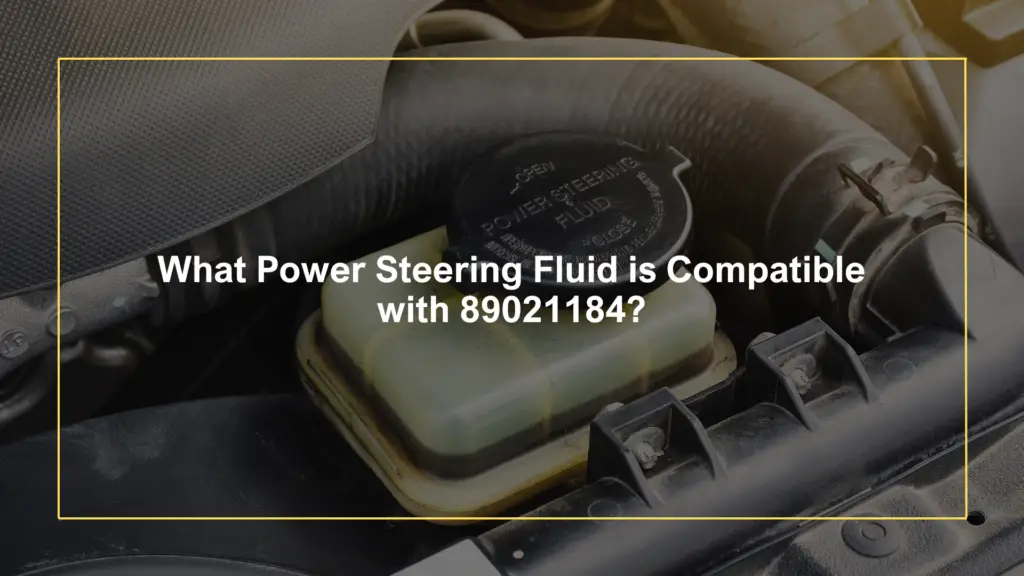

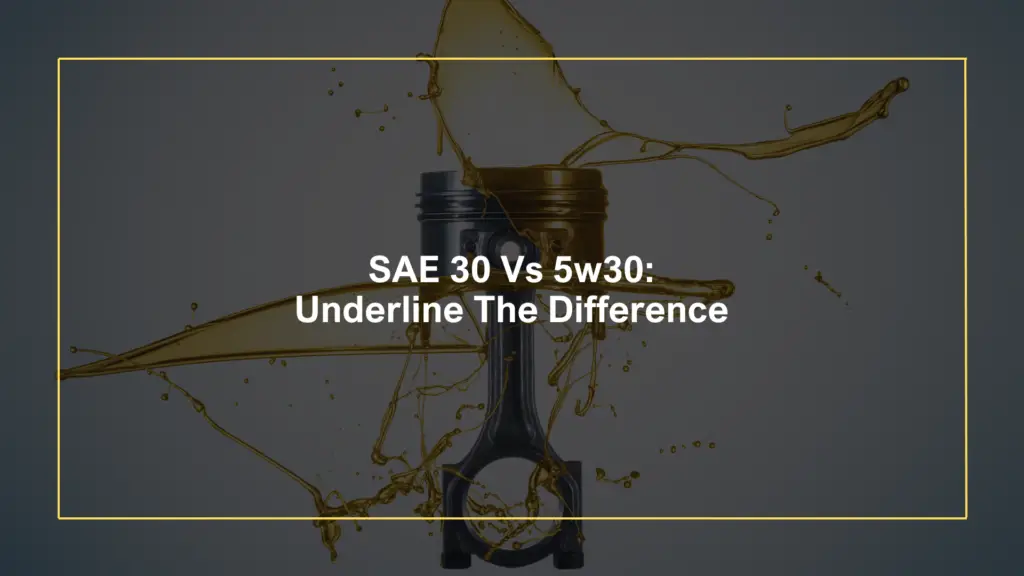
Pingback: 5.3 Common Oil Leaks: Cause & Repair Guide - Oils Advisor
Pingback: Coolant Boiling In Reservoir: Causes & Solutions - Oils Advisor